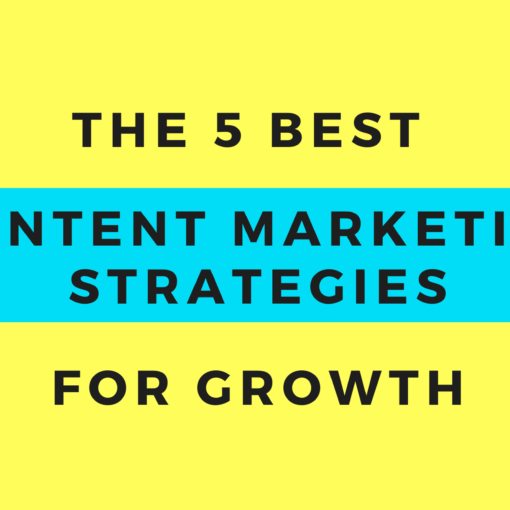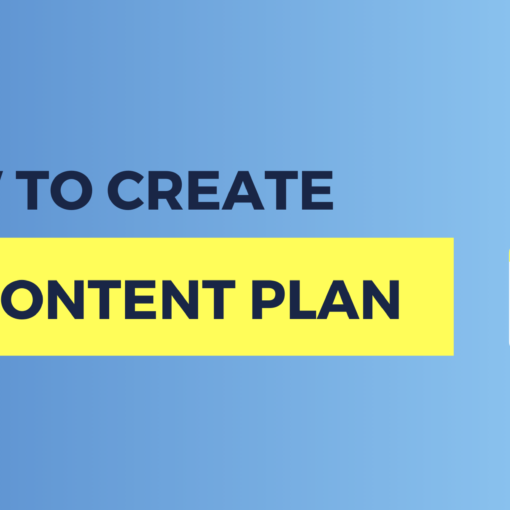Finding new customers (and keeping existing ones) is difficult, especially in a crowded industry. With the rise in social media, paid advertising, and other forms of digital marketing, it can be hard to decide which tactic will bring you the most leads (and sales). As a business, you just want to have a digital strategy that works for you to improve your bottom line.
So, how do you stand out in the crowd? The answer is in having an effective lead magnet strategy. But, before going any further, let’s define what a lead magnet is.
CONTENTS
- What is a Lead Magnet?
- Lead Magnet Statistics
- Lead Magnet Case Study
- A Simple But Effective Lead Magnet Strategy (Step-by-Step)
What is a Lead Magnet?
A lead magnet is a tempting offer that encourages users to sign up to your website. Educational content offers come in the form of eBooks, guides, checklists, quizzes, or any other type of content that your ideal buyer would want.
Here’s an example from Copy Goals:
The point of having a lead magnet is to get that person to your website and to collect their contact information. Once they have filled out their name, email, and other contact information in exchange for their free offer, you can continue to nurture them down the marketing funnel with the contact information they provided.
Using lead magnets as part of your overarching lead generation strategy will allow you to build your email lists and analyze potential customer behavior.
So, what do the numbers say about having a lead generation strategy?
Lead Magnet Statistics
- 50% of marketers who start using lead magnets report higher conversion rates. (wpforms)
- 58.6% of marketers claim that short-form written lead magnets (newsletters, checklists, copy examples, smaller files, ebook samples) make for the highest conversion rates while 41.4% claim that long-form written content (guides, whitepapers, reports, email courses, spreadsheets, curated or personalized reports) makes for the highest conversion rates. (GetResponse)
- The digital lead generation spend in the US is forecast to reach 3.2 billion U.S dollars by 2023. (Statista)
- 93% of B2B companies say content marketing generates more leads than traditional marketing strategies. (Marketo)
- Content marketing generates three times as many prospects as outbound marketing but costs 62% less. (Demand Metric)
Lead Magnet Case Study: How This Company Grew its Email List by 4000 Subscribers
Your company has a valuable solution for the challenges your ideal customers face. Whether they need help saving time, saving money, or something else, your prospective customers need your products or services —even if they don’t know it yet. The best way to get on their radar is to effectively use lead magnets to continue to nurture the relationship forward.
Let’s look at an example where one company used lead magnets to grow its email list and capture new loyal subscribers.
GetUpLift & The Power of Exit Pop-Ups
Have you heard of an exit pop-up?
Basically, an exit pop-up is a type of pop-up form that appears on the user’s screen before they are about to exit the site. And, this was the marketing tactic that GetUpLift used to skyrocket their email list by 4000 new subscribers! They crafted a strategic exit pop-up that offered a free resource, a cheat sheet, in exchange for the user’s contact information.
Through research, they were able to learn the behaviors of their audience and forecast the success rate of running an exit pop-up campaign.
Many generic lead magnets flood systems with uninterested leads that just sit in the system never to engage with your business ever again. Also, irrelevant pop-up forms can be seen as pesky and annoying to the user.
But using well-thought-out lead magnets captures leads who want to learn more about your business!
What do the leads say about this campaign? We will let the feedback speak for itself:
A Simple But Effective Lead Magnet Strategy (Step-by-Step)
Now that you know what a lead magnet is and why it’s important to have one, it’s time to think through your lead magnet strategy.
Almost every online business you know offers some sort of lead magnet strategy. Whether it’s a B2B or B2C business, all businesses utilize different lead generation tactics to push their business forward and improve their ROI.
Are you ready to create a lead magnet strategy of your own? Follow these 8 easy-to-follow steps to get started:
1. Nail Down Your Target Audience
Before choosing a lead magnet, you need to figure out who your target audience is. What are their pain points? Which one of your products or services would solve that pain point? What questions may they have about your business before purchasing? These are all questions you need to think through before launching a strategy.
2. Decide What Stage of the Buyer’s Journey You Want to Focus on
The type of lead magnet you choose will depend on which stage of the buyer’s journey your target audience is at. Having a short-form piece of content like a checklist is a perfect offer for a prospect in the awareness stage. While a long-form offer like a guide or eBook is ideal for those in the consideration or decision stage.
3. Choose Your Lead Magnet
Now it’s time to choose precisely what kind of lead magnet you want to produce. Here are some lead magnet ideas that will get your prospective customers excited:
- eBook
- Checklist
- Quiz
- Free Trials
- Calculator
Bear in mind that some lead magnet formats tend to perform better than others:
If you want to create a beautifully designed lead magnet of your own, check out these lead magnet templates.
4. Use Alluring Copy for the Offer
You can either outsource the writing or designate a copywriter inside of your company to begin crafting the messaging. You can always draw inspiration from other offers you find online to help you create copy that converts.
Here’s a fantastic example from Shopify:
Once you’ve written the copy, you can have a graphic designer help you package the offer into a branded, easy-to-follow format for your audience.
5. Design a Conversion-Worthy Landing Page
Now, it’s time for you to create a landing page to capture contact information from individuals who are interested in your offer. You want to be sure to follow landing page best practices so that you’ll get the optimal amount of form submissions.
For awareness-level content offers, you may only ask for their name and email on your submission forms. (Asking too many questions in a form can deter users from filling out the form altogether. )
And for consideration/decision-level content offers, you’ll want to ask for even more contact information in exchange for the gated offer since they are further in the buyer’s journey. Because they are further along in the buyer’s journey, they won’t mind if the form is a little longer since they’re already interested in your products or services.
6. Create an Exit Pop-Up
As you saw with the GetUpLift example, you can also use exit pop-ups to target users with a relevant offer as they’re about to leave your site. Alternatively, you can place a promo for your lead magnet in the sidebar, the body of content, or at the end of your posts.
When users click they’ll be taken directly to your landing page. Or you could even include a quick signup form with one or two fields directly within the ad for your lead magnet. Explore what your email capture tool has to offer in terms of forms.
7. A/B Test Your Offer
Run an A/B test of your landing page or pop-up using a tool such as Google Optimize. You can either test design or copy.
You only want to test one creative element at a time so you can better understand why one landing page was performing over another. Once your campaign has been live for a certain amount of time (experts suggest a minimum of one to two weeks), you can then turn off the landing page that isn’t performing.
8. Review Your Results
Lastly, you need to keep an eye on the results of your lead magnet campaign. Here are some important metrics you need to check on :
- Landing Page Views
- Traffic Source
- Bounce Rate
- Click-Through Rate (CTR)
- Cost Per Conversion
- Time Spent on Page
Without measuring the analytics, it’ll be hard for your teams to know what worked and what didn’t with this particular campaign. You always need to analyze the metrics so that you can re-optimize that particular campaign and use the information to help guide you in all future lead generation campaigns.
Final Word
We’ve all come across a resource that speaks to us personally. Whether it’s a free website audit or a white paper about personal finances, finding content that truly speaks to us drives us to action.
That’s what you want your offer to do: drive your audience to take action.
So, what are you waiting for? It’s time to launch your first lead magnet campaign and watch the new leads roll in.



